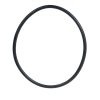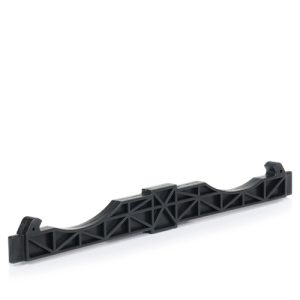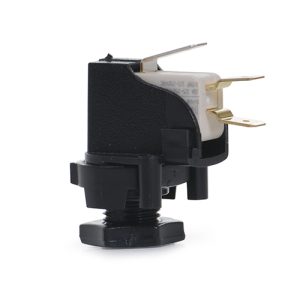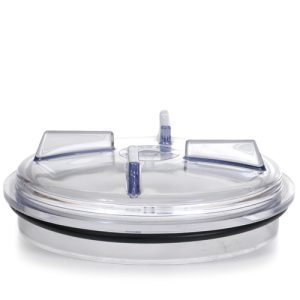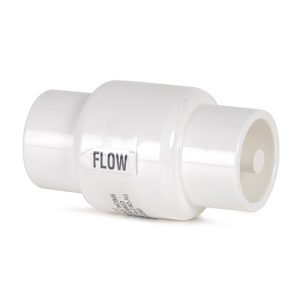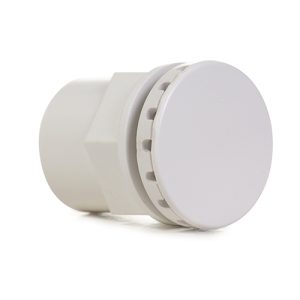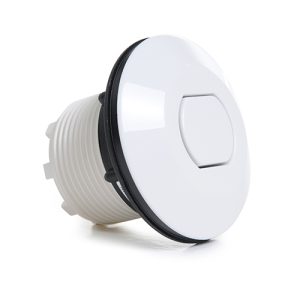Aquamite Pump Lid O-ring
Critical Seal for Airtight Pump Operation
As a retailer of pool and spa parts, I stock this replacement O-ring for Aquamite pump lids. This simple rubber seal is absolutely essential for pump operation—without a properly functioning O-ring, your pump cannot maintain the airtight seal necessary to prime and circulate water.
What is a Pump Lid O-ring?
The pump lid O-ring is a circular rubber gasket that sits in a groove on either the pump lid or the pump housing rim. When you tighten the lid, it compresses this O-ring, creating an airtight seal between the lid and housing. This seal is critical—even the smallest air leak prevents the pump from generating the suction needed to draw water from the pool.
Made from chemical-resistant rubber compounds (typically EPDM, Buna-N, or Viton), the O-ring must withstand constant exposure to chlorinated water, temperature variations, compression forces, and UV exposure while maintaining its sealing properties.
The O-ring’s round cross-section allows it to compress uniformly when the lid is tightened, filling microscopic gaps between the mating surfaces and creating a pressure-tight seal that prevents both air infiltration and water leakage.
Why This Small Component Matters So Much
The pump operates by creating a pressure differential—low pressure (suction) on the inlet side and high pressure on the discharge side. To generate this suction, the pump housing must be completely airtight. Even a tiny air leak at the lid O-ring allows atmospheric air to enter, preventing the pump from creating adequate suction to draw water from the pool.
When the O-ring fails, the pump hums and runs but cannot prime—it simply churns air without moving water. This “air lock” condition prevents pool circulation entirely, causing water quality to deteriorate rapidly and potentially allowing the motor to overheat from running without the cooling effect of water flow.
The O-ring also prevents water from leaking out of the pressurized strainer housing during operation. While air infiltration is the more common problem, a severely degraded O-ring can allow water to weep from the lid seal, creating puddles around the pump.
Signs Your O-ring Needs Replacement
The pump struggles to prime or loses prime during operation—this is the classic symptom of O-ring failure. You may see air bubbles entering the strainer basket through the lid seal, or the pump may repeatedly lose water and start pumping air.
Visible damage to the O-ring itself is obvious: cracks, splits, flat spots, or sections that appear stretched or torn all indicate immediate replacement is needed. Even minor damage compromises sealing ability.
The O-ring feels hard, brittle, or has lost its flexibility when you squeeze it. Fresh O-rings are pliable and springy; aged ones become stiff and won’t compress properly to fill sealing gaps.
Water seeping from beneath the pump lid indicates the O-ring can no longer contain the pressure inside the housing. While air leaks are more common, water leaks definitely signal O-ring failure.
The O-ring no longer sits properly in its groove—it may be stretched, twisted, or have rolled out of position. An O-ring that won’t stay in place cannot seal effectively.
You can see the O-ring is flattened where it’s been compressed. Rubber O-rings develop “compression set” over time—permanent deformation that prevents them from springing back to their original shape and creating an effective seal.
Common Causes of O-ring Failure
Age is the primary factor—rubber compounds gradually degrade through normal use. Most pool pump O-rings last 1-3 years depending on conditions, but replacement should occur at first sign of problems rather than waiting for complete failure.
Chemical exposure accelerates degradation. Chlorine, bromine, and other sanitizers attack rubber over time. Extremely imbalanced water chemistry (very high or low pH) speeds this process. Spilled concentrated chemicals are particularly damaging.
UV exposure from direct sunlight breaks down rubber compounds, making O-rings brittle and prone to cracking. Pumps in full sun age O-rings faster than shaded installations.
Over-tightening the lid crushes the O-ring excessively, causing permanent compression set. The flattened rubber loses its ability to spring back and fill gaps. Always tighten lids just until snug—excessive force damages O-rings.
Improper lubrication or lack of lubrication causes problems. Dry O-rings can stick and tear during lid installation. Using petroleum-based lubricants (like Vaseline) actually degrades rubber O-rings. Only silicone-based lubricants should be used.
Debris trapped between the O-ring and sealing surface creates leak paths. Sand, leaves, or chemical deposits prevent the O-ring from seating fully, allowing air or water to bypass the seal.
Temperature extremes—particularly freezing—can crack or permanently deform O-rings. Proper winterization prevents this damage.
Proper O-ring Maintenance
Inspect the O-ring every single time you open the pump to clean the basket—at least twice weekly during swimming season. Look for cracks, flat spots, twisting, brittleness, or embedded debris. This takes only seconds and prevents frustrating priming problems.
Clean the O-ring and its groove thoroughly before reinstalling the lid. Use a damp cloth to remove any debris, algae, chemical deposits, or old lubricant. Clean the mating surface on the housing as well. Even small particles prevent proper sealing.
Apply a thin coat of silicone-based lubricant to the O-ring before each lid installation. This helps the O-ring slide into place without twisting or binding, extends its life, and improves sealing. Use products specifically designed for pool equipment O-rings or pure silicone lubricant—never petroleum jelly or other oil-based products.
Ensure the O-ring sits properly in its groove with no twists or rolls. A twisted O-ring creates immediate leak paths. Position it carefully, checking all around the circumference that it’s seated evenly.
Replace O-rings at least annually as preventive maintenance, even if they appear functional. The modest cost is insignificant compared to the frustration of priming problems during peak swimming season.
Installation Tips
Remove the old O-ring completely and inspect the groove for damage or debris. Clean the groove thoroughly—use a small brush or cloth to remove any residue.
Lubricate the new O-ring generously with silicone lubricant before installation. This prevents tearing and helps the O-ring seat properly.
Place the O-ring in its groove carefully, working around the circumference to ensure it sits evenly with no twists. Press it gently into place—it should sit fully in the groove without protruding excessively.
After installing the lid, tighten only until snug. When you feel resistance, turn just slightly more—perhaps a quarter to half turn. Over-tightening damages both the O-ring and the lid threads or clamp mechanism.
After starting the pump, watch through the clear lid for air bubbles entering the strainer. If you see bubbles coming from the lid seal, the O-ring may need repositioning or the lid may need slight additional tightening.
Why Genuine Replacement O-rings Matter
O-rings may look similar, but subtle differences in size, material, and cross-section affect sealing performance. An O-ring that’s slightly too small won’t fill the groove properly; one that’s too large bunches up and creates leak paths.
Cheap O-rings made from inferior rubber compounds degrade rapidly when exposed to pool chemicals. They may seal initially but fail within weeks, requiring repeated replacement.
Genuine replacement O-rings are manufactured from rubber compounds specifically formulated for pool environments—they resist chlorine, maintain flexibility across temperature ranges, and provide reliable long-term sealing.
The correct O-ring size ensures proper compression when the lid is tightened. Too much compression causes rapid degradation; too little fails to create an adequate seal.
Compatibility
This O-ring is specifically sized for Aquamite pump lids. The inner diameter, outer diameter, and cross-section match the lid groove dimensions and sealing surface requirements. Using the correct O-ring ensures reliable sealing and optimal pump performance.
Aquamite pumps are popular compact models for residential pools and spas, making this O-ring a frequently needed maintenance item.
Product Specifications
| Specification | Details |
|---|---|
| Product Type | Pump Lid O-ring Seal |
| Compatibility | Aquamite pump lids |
| Function | Creates airtight seal between lid and housing |
| Material | Chemical-resistant rubber (pool-grade compound) |
| Application | Seals pump strainer lid |
| Lubrication | Requires silicone-based lubricant |
| Replacement Frequency | Annually or at first sign of wear |
| Weight | 0.02 kg |
| Dimensions (L × W × H) | 0.1 m × 0.15 m × 0.15 m |
| Volume | 0.002 cubic meters |
| SKU | 6497240053 |
| Category | Pool & Spa Spares |
Best Practices
Keep spare O-rings on hand—at this modest price, having extras available eliminates delays when replacement is needed. A failed O-ring during peak season can shut down your pool for days waiting for parts.
Never reuse old O-rings “temporarily” while waiting for replacements. A failing O-ring causes frustration and wasted time with priming attempts that can’t succeed without a proper seal.
Mark your calendar for annual O-ring replacement during spring opening. This preventive approach is more convenient than mid-season emergency replacements.
Store spare O-rings in a cool, dark place away from chemicals and sunlight. Keep them in sealed bags or containers to prevent environmental degradation before use.
When you replace the O-ring, also inspect the sealing surfaces on both the lid and housing. Scratches, warping, or damage to these surfaces can prevent even a new O-ring from sealing properly.
This inexpensive component is absolutely critical for pump operation—a properly maintained O-ring ensures reliable priming and operation throughout the swimming season, making it one of the most important maintenance items for any pool pump.
| Weight | 0.02 Kilograms |
|---|---|
| Length | 0.1 Meters |
| Width | 0.15 Meters |
| Height | 0.15 Meters |
| Volume | 0.002 CubicMeters |
| Supplier | GoldenC |

